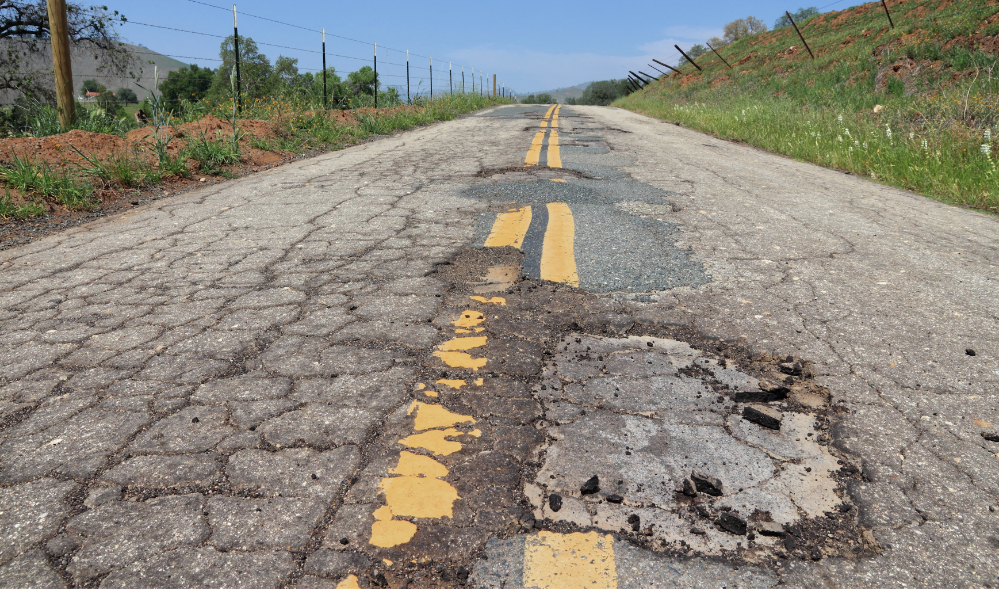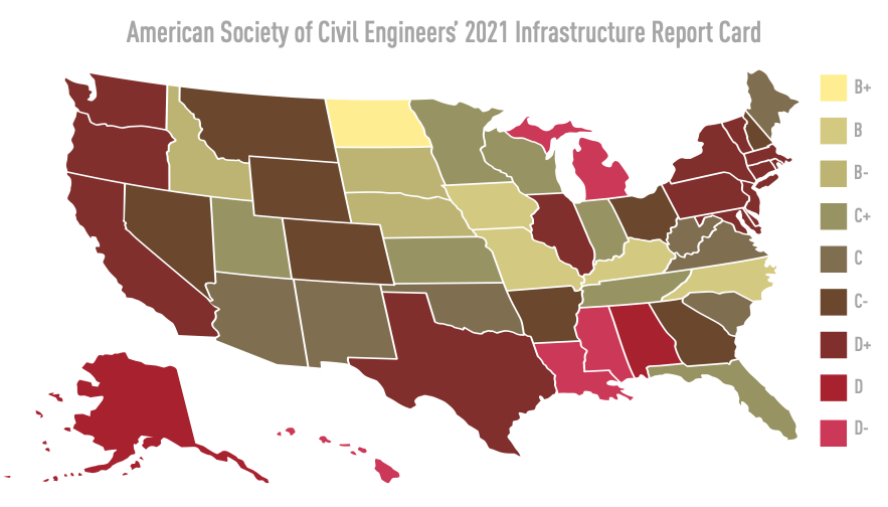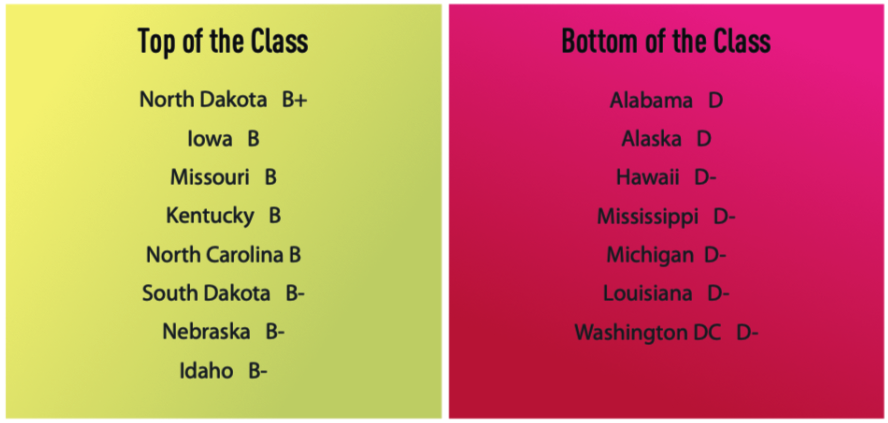
ONCE UPON A TIME, America’s highway system was a source of national pride. These days there’s not much pride to go around. Yes, there are some truly nice, magic-carpet-smooth highways out there, but not enough to balance out the remaining 2.9 million miles of paved public roads in the US. I’ve driven roads with paving so bad that I took to the shoulder for some relief, or took the long way there on a dirt road that was in better shape. Then there are the decaying bridges and overpasses. I try not to think about those.
A mix of age, hostile weather, high use, budgetary issues, competing priorities, and power struggles got us into this mess. And a road system that was built over a couple of centuries or more isn’t going to be repaired all at once, overnight. So whenever I finish grumbling about being held up by roadwork, I remind myself I’m thankful they’re fixing something.

We nomads live on the road. Bad ones are not only annoying to drive on, they’re also hard on our rolling homes, which is hard on our limited budgets. There’s also a correlation between bad roads and traffic accidents — which are even harder on our budgets. And on our wellbeing.
Where are the worst roads, so I can avoid them?
In 2021 the American Society of Civil Engineers evaluated our highway system and produced the Infrastructure Report Card. The grades were not good, with the best grade being a B+ (thumbs up, North Dakota) and an overall grade of D+.

Some of the ratings were predictable. States with the oldest roads (because they have been settled longer), those with the harshest weather, those with higher populations and traffic, poorer states, and/or those that haven’t been fans of public spending tended toward the bottom. But it wasn’t true in every case.

What about Canada?
The Canadian Council of Ministers of Transportation publishes an annual report using a five-point scale, with 1 being the best and 5 being the worst. The 2022 report found that the average condition of Canadian roads was 2.9.

The provinces with the best roads are Prince Edward Island, New Brunswick, and Nova Scotia. The provinces with the worst roads are Quebec, Manitoba, and Saskatchewan.
Does this information affect your travel plans?
Of course, not every road in the low ranking states is bad, and not every road in the higher ranking states is good. But the ASCE grades offer a clue about the averages.
Personally, there are places I want to travel to regardless of road conditions. The crumbling pavement and traffic delays are absolutely worth it. And there are places I have zero interest in visiting, no matter how wonderful their highways and byways might be. I’m more the type who checks the maps for alternate routes, and who remembers from past experiences. “Oh yeah, this is where I take the detour.” (Which, now that I think of it, is how I’ve traveled my road of life.)

“…my road of life” U-turn and go back to do it again!
Excellent article and map. New England roads are collectively some of the worst, but I love boondocking in Vermont, New Hampshire, and Maine, which is an exception. The last time I traveled Maine’s roads was Fall of 2021. Wet from rain the six weeks I was there, the colors were absolutely luminous, and virtually every road was in good shape. A magic carpet ride it was, admiring Maine’s beauty with minimal distraction. At times I felt as if I was on a rollercoaster because the roads wind, climb, descend, and rise again, but that was fun driving in my SUV. What made it so was clearly marked guidelines and the absence of potholes, uneven surfaces, grooved and rutted pavements, or shoulders that suddenly narrowed to nothing. Engine mounts and sidewalls intact, I left the state having checked it from my bucket list, only to write it in again. Fall of 2023 will see me traveling Maine’s highways and byways once more. Wonderfully sweet anticipation is mounting even now.
Where did you boondock in new England want to go didnt know where to stay
I was in Chicagoland from the summer of 1990 to Mar of 1995 and I was impressed by the poor condition of all the roads (interstates at least) in the state.
I could be driving from Wisconsin or Iowa and tell I was back in Illinois just by the condition of the road
I figured road repair in the state was a mob deal, do a crappy job now and get paid to do it again next year.
I have not been back since then…
Everything looks better than the stretch of CA 101 between Crescent City and Highway 1, which was where I lived when I hit the road running, lol.
I hear that the stretch of I-40 between Kingman and Flagstaff is probably best avoided by small-town girls who have little to no experience with 75MPH speed limits, lol.
Oregon is calling.
All the east-west Interstates are drive-as-fast-as-you-dare routes. The only things that slow them down are construction and acts of God.
And that stretch of 1 between Leggett and the Coast requires some patience and attention, and maybe something to settle your stomach.
Oregon is terrible! I live here and have my whole life. The map gives you a pretty good clue about Oregon.
The ASCE should change the colors on that map. They are using just lighter and darker tones of the same two colors. The top 3 and the bottom 3 are very hard to distinguish on the map, the one from the other. The National Weather Service makes the same mistake on their daily weather map of the 50 states, many tones of the same color making it hard to distinguish. However, at least the NWS has a lot more different weather phenomena to separate out. This map on the other had only has to separate out the 9 different grades, so they should have used a variety of different colors. That would make it much easier to read.
Since each state is a mix of good and bad roads, the idea was to show a generality, not specifics. And the amount of difference between grades is small anyway.